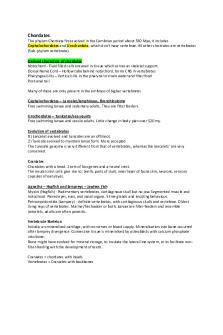LEC 12 - Lecture notes 12 PDF

| Title | LEC 12 - Lecture notes 12 |
|---|---|
| Author | Judy Tang |
| Course | Introduction to Cognitive Science |
| Institution | University of California San Diego |
| Pages | 3 |
| File Size | 120.8 KB |
| File Type | |
| Total Downloads | 114 |
| Total Views | 195 |
Summary
Lecture 12: Creel (Language)...
Description
LEC 12 Language Creel What do know/ see in language @ 3 yos? Good narrative skills Gestures Overgeneralized concepts o Obi-Wan = teacher o Garage sale for robots Phoneme errors o Erratic production of final L sound (“well” or “wew”) o Shiny => s (siny guy, spacesip) o Th => f (wifout, Darf Vader) Verb forms overregularized (“blowed up”) instead of blew up Frozen phrases (don’t talk back to Darf Vader, he’ll get ya) o Overlearned phrases [learned as a whole chunk] WHAT ARE YOU LEARNING? Speech sounds Finding word boundaries Mapping words to meanings Syntax (grammar) Language in social context – unfamiliar conventions o Learning to interact w/ professors in college v.s. HS teacher v.s. coach, etc. o Talking to grandma about getting underwear for Christmas .. again POSSIBLE PATTERNS THAT THIS IS LEARNED 1. Sequential: speech sounds + words + grammar + social context (one after the other) a. SPEECH PRODUCTION i. Popular b/c this is how speech production occurs ii. @ 6-8 mos: onset of canonical babbling [speech sound] + turn-taking + eye-contact iii. @ 10-12 mos: 1st words [words] iv. @ 18 mos: “word spurt” [grammar] producing 2-word speech (sentence-like combinations) v. Social context = takes a while!! vi. NOTE: perception PRECEDES production b. RECOGNIZING/ COMPREHENDING LANGUAGE i. By 10-12 mos: only sensitive to speech sound changes in your native language ii. OLD IDEA: need to have small set of sound “symbols” (like mental letters) – store words in brain – otherwise, information overload 2. Overlapping: feedback on one another = combo of everything a. RECOGNIZING/ COMPREHENDING LNAGUAGE i. Show some word recognition @ 6-9mos ii. Respond to word order @ 17 mos (before 2-word stage) iii. Show some social responsiveness to language in infancy
iv. LOTS of studies showing non-adult like sensitivity to differences in speech sounds, voices, vocal emotion, word stress patterns in preschool years and beyond
CUE TO WORD BOUNDARIES Stress: English: most nouns = stress-initial Strong-initial v.s. weak-initial words SI: BUTter, CANdle, PUPpy, SAUsage WI: banana, caboose, recline, aGREE MSS = metrical segmentation strategy = strong syllable = start of word STUDY: JUSCZYK, HOUSTON, NEWSOME Infants’ recognition of word forms 7.5 mos: stress initial (kingdom) CAN + stress-not-initial (guitar) CAN’T 10.5 mos: CAN pick out stress-non-initial words (guitar) BUT: Not all languages have stress pattern, SO: how do you know what the PROPERTIE of words are if you don’t know WHAT the words are? STUDY: SAFFRAN, ASLIN, NEWPORT Statistical Learning: 8mos infants 1st trial: Bidaku, tupiro sounds = constant & appears in high probability 2nd trial: Bidaku & pirobi type words = presented Listened to pirobi type words more b/c preference for novelty = = > BY 8MOS, infants able to segment words based on statistical cues STUDY: JOHNSON & JUSCYZK Stress v.s. stats; stress wins: 8mos infants
STUDY: THIESSEN & SAFFRAN Stats wins @ 7mos, stress wins @ 9mos MTA: segmentation precedes stress Q: if learning = slow, why are kids so good at learning language? A: 1. We don’t know b/c many variables @ play (social preferences, % time in new language) 2. They aren’t (slower @ learning vocab v.s. adults) 3. They’re doing it differently a. Adults learning L2 depend on their preexisting knowledge b. Children under 6/7 = learning sound patterns of L2 from ground up...
Similar Free PDFs

LEC 12 - Lecture notes 12
- 3 Pages

12 - Lecture notes 12
- 3 Pages

Chapter 12 - Lecture notes 12
- 4 Pages

Lab 12 - Lecture notes 12
- 5 Pages

(12) Mistake - Lecture notes 12
- 8 Pages

Chapter 12 - Lecture notes 12
- 9 Pages

Lecture notes, lecture 12
- 9 Pages

Lecture notes, lecture 12
- 7 Pages

Sachvui - Lecture notes 12
- 271 Pages

Mujadid - Lecture notes 12
- 1 Pages

Lecture 11 + 12 notes
- 16 Pages
Popular Institutions
- Tinajero National High School - Annex
- Politeknik Caltex Riau
- Yokohama City University
- SGT University
- University of Al-Qadisiyah
- Divine Word College of Vigan
- Techniek College Rotterdam
- Universidade de Santiago
- Universiti Teknologi MARA Cawangan Johor Kampus Pasir Gudang
- Poltekkes Kemenkes Yogyakarta
- Baguio City National High School
- Colegio san marcos
- preparatoria uno
- Centro de Bachillerato Tecnológico Industrial y de Servicios No. 107
- Dalian Maritime University
- Quang Trung Secondary School
- Colegio Tecnológico en Informática
- Corporación Regional de Educación Superior
- Grupo CEDVA
- Dar Al Uloom University
- Centro de Estudios Preuniversitarios de la Universidad Nacional de Ingeniería
- 上智大学
- Aakash International School, Nuna Majara
- San Felipe Neri Catholic School
- Kang Chiao International School - New Taipei City
- Misamis Occidental National High School
- Institución Educativa Escuela Normal Juan Ladrilleros
- Kolehiyo ng Pantukan
- Batanes State College
- Instituto Continental
- Sekolah Menengah Kejuruan Kesehatan Kaltara (Tarakan)
- Colegio de La Inmaculada Concepcion - Cebu




